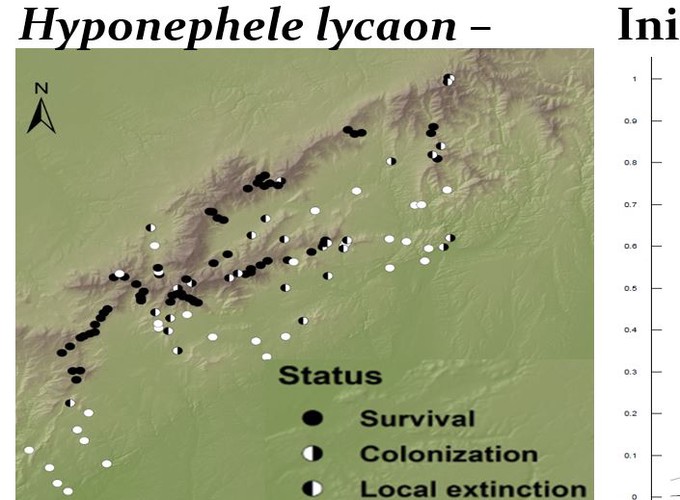 Image credit: BES
Image credit: BES
 Image credit: BES
Image credit: BES
Recent uphill shifts in species ranges have lagged behind those expected from rates of climate warming. The aparent delays in elevation range shifts could stem from. i) barriers to colonization at high-elevation range limits, ii) buffering effects on local ectinction risk at low-elevation, or iii) insufficiently fine-resolution data on species distributions. Here we test for elevation range shifts in the butterflies of a mountain range in Spain, using information from the repeat sampling of 120 sites between 600 and 2250 m elevation in 2004/05 and 2017, and apply an occupancy model to account for species detectability.Whilst the average elevation occupied increased for the majority of species in conjunction with warming temperatures, the importance of local extinctions versus colonizations in driving range shifts varied among species. We consider the implications for approaches to sampling elevation range dycamics, and for adapting conservation climate change.